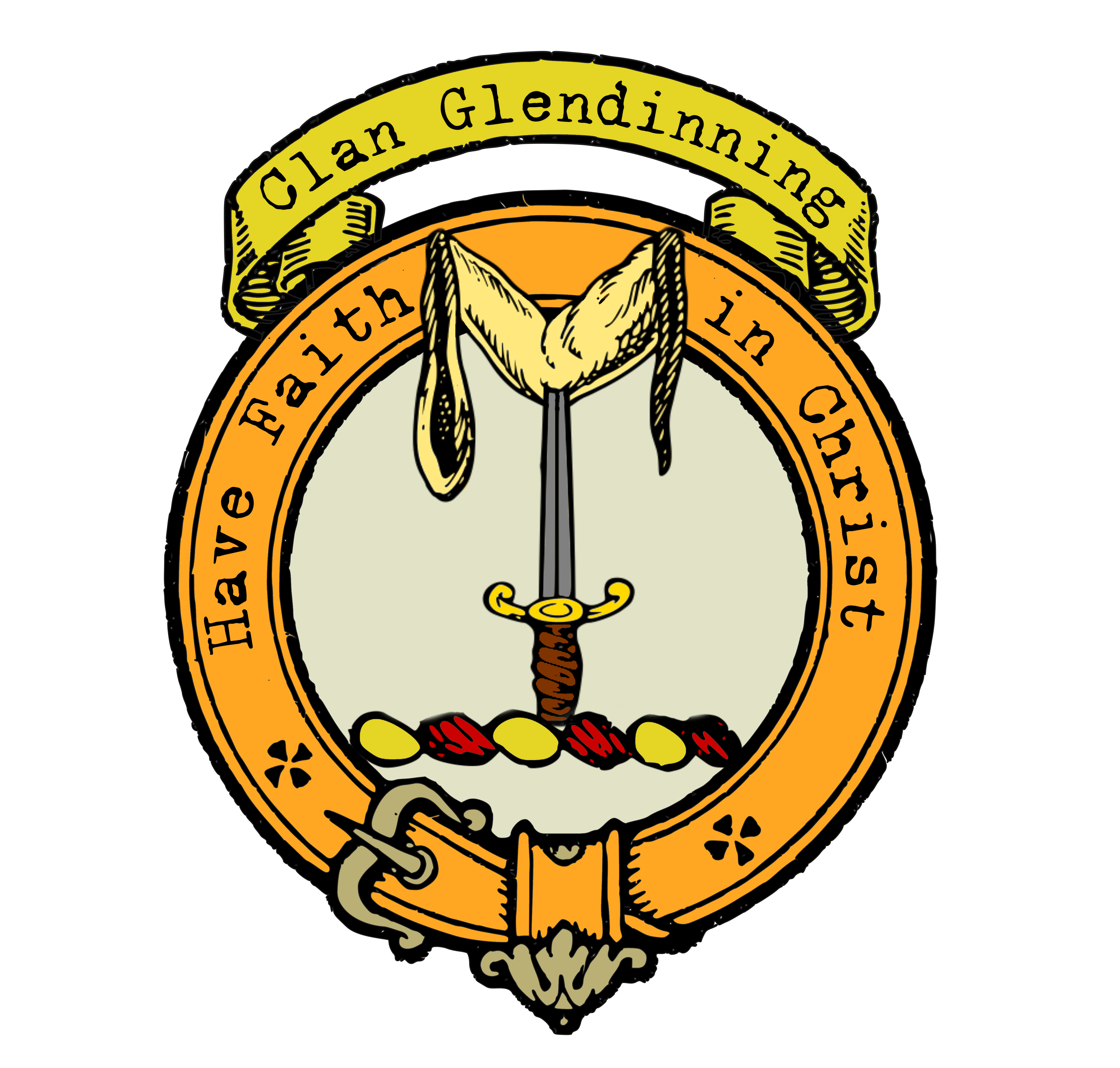Glendinning Clan Crest
|
|
CREST: A Maunch upon a point of a sword MOTTO: Have Faith in Christ TRANSLATION: N/A VARIATIONS: N/A |
| The Glendinning clan is a Scottish clan with a rich history that can be traced back to the Middle Ages. The clan takes its name from the lands of Glendinning in Westerkirk, Dumfriesshire. Over the centuries, the Glendinnings have played important roles in Scottish history, from supporting Robert the Bruce to fighting in the Jacobite rebellions. | |
 |
|
| Purchase @ Redbubble Purchase @ Amazon.com Purchase @ Amazon.co.uk |
|
| The Glendinning clan has a long and proud history. According to Black’s “The Surnames of Scotland,” a charter was granted by John Macgill of that Ilk to Adam de Glendonwyn prior to 1286 for his part of the lands and baronies of Clifton and Mertobel in Roxburghshire. Sir Adam de Glendonwyn was a supporter of Robert the Bruce and a companion of Sir James Douglas on his pilgrimage to take the heart of Bruce to the Holy Land. The connection with the house of Douglas remained strong, and Sir Simon Glendinning was killed in the battle between the Douglases and the Percys at Otterburn in 1388.
The power of the family grew, and another Sir Simon Glendinning was a favorite of James II who extended his Borders landholdings. The family also became hereditary bailies of Eskdale. In 1458 they obtained the barony of Parton in the Stewartry of Kirkcudbrightshire, and this was to become the territorial designation of the main family. The fortunes of the family were reversed when John Glendinning, eleventh Baron of Parton, joined Montrose in his campaign against the opponents of Charles I in the civil war. He was denounced as a traitor and all his goods were forfeited. He fled to the Continent and remained there until the Restoration. According to Anderson’s “The Scottish Nation,” the male line of this family ended in 1720 when Agnes Glendinning married James Murray of Conheat. However, Black points out that the death of William Glendinning of that Ilk is recorded in the commissary papers for Kirkcudbright in 1798. More recently, DNA sampling has disclosed ancestral relationships between those with the names of Glendinning, Little, and Elliot. The close connection between the Douglases, the Elliots, Glendinnings, and Littles makes these DNA results especially significant. Historians have found that Anglo-Bretons and therefore Scots-Bretons, were notoriously late in adopting surnames. In the case of the Elliots, the adopted surname, “Elwald,” was used interchangeably with the old Breton toponym-based surname, and eventually abandoned. This DNA sampling now suggests that those families which were not settled on Redheugh lands adopted their own new surnames, based on local toponymic or geographic features, as the Flemish Douglas progenitor had done, taking his name from lands surrounding Douglas Water. The Glendinnings took their name from their new home, and the Littles took their name from the Liddel. |
|
Citations:
|
|

